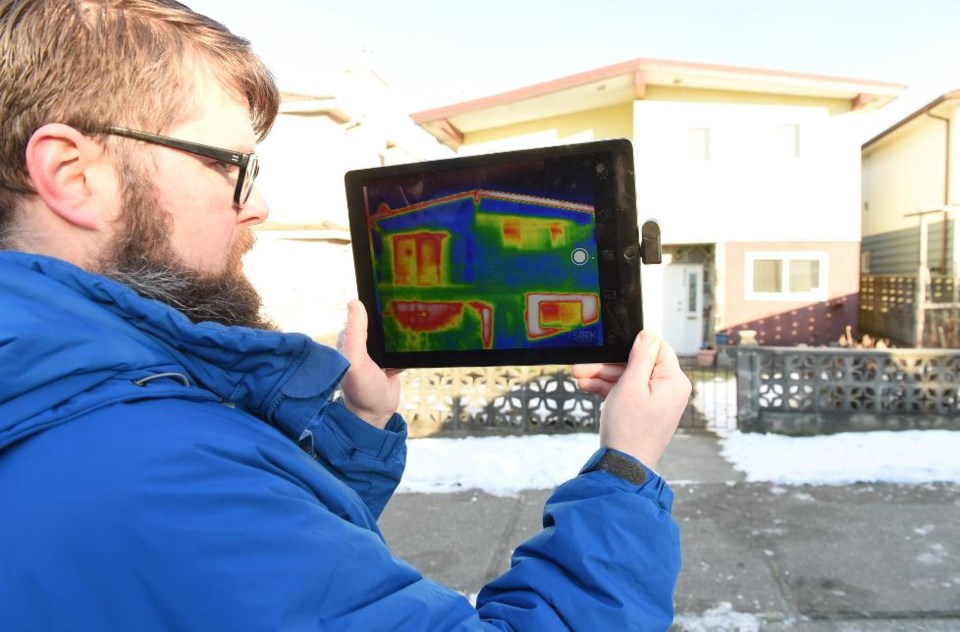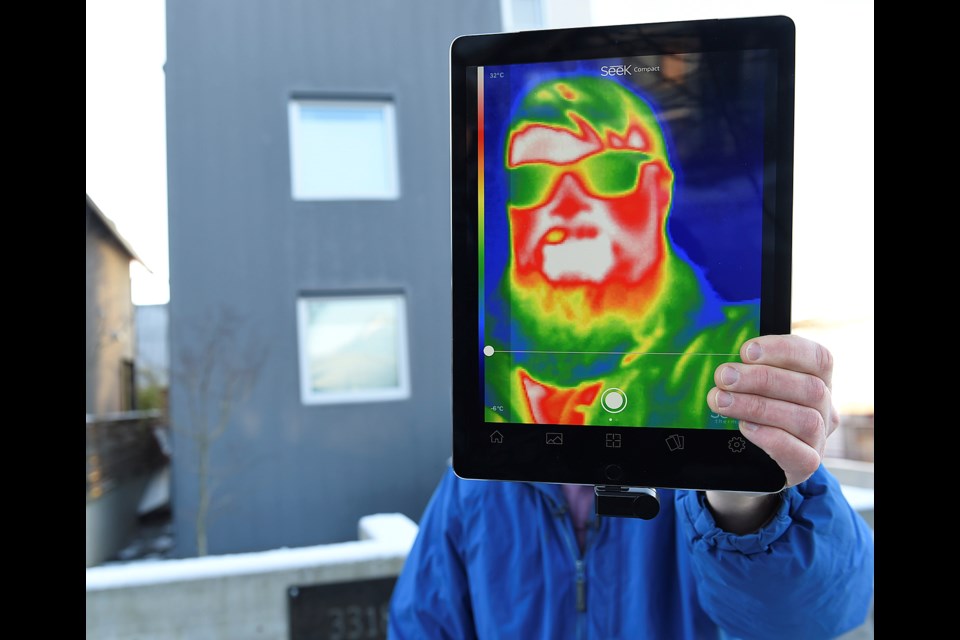Fifteen thousand detached homes in five different Vancouver neighbourhoods will be scanned with a thermal imaging camera mounted to the top of a car in coming weeks. Through a pilot project, the city wants to identify sources of heat loss in the homes so homeowners can consider options to improve energy efficiency.
Homeowners of about 3,000 of the homes, which have the greatest potential for energy savings, will be sent the thermal images, as well as information on how to get an energy assessment and incentives they can take advantage of through companies like B.C. Hydro and Fortis to fix problem areas.
The images will be taken over a couple of weeks between the hours of 10 p.m. and 6 a.m. The effort could begin as early as Jan. 16 since the camera works in cold, dry weather.
“This is a cost-effective way to help homeowners identify ways to improve the energy efficiency of their home and reduce their energy bills,” explained Sean Pander, the city’s assistant director of sustainability, during a press conference outside a home on Adanac Street in East Vancouver to demonstrate how the camera works.
The camera detects temperature differences and shows them in different colours. When something is hot, the image shows bright yellow and red; if it’s cold, it shows as dark blue or purple, so homeowners can see where heat loss is occurring.
Open houses are scheduled next week where homeowners can learn more about the pilot program, which will cost about $100,000 — an estimated $6 per home scanned.
Pander said the city wants to reduce greenhouse gas emissions from existing homes and buildings by 20 per cent by the year 2020, as part of its Greenest City Action Plan.
Neighbourhoods being targeted for the pilot include Strathcona, Hastings-Sunrise, Dunbar-Southlands, Riley Park and Victoria-Fraserview. Privacy is being protected, Pander said. The cameras can’t see inside homes and no one has access to the images except homeowners. The images also can’t be used for any other purpose than helping homeowners improve efficiency.
Those who aren’t comfortable with their homes being imaged can opt out by emailing the city at thermal.imaging@vancouver.ca.
The pilot project was developed after a resident contacted the city to point out it’s easy to tell which homes aren’t properly insulated by looking at their roofs. The frost melts on ones with poor insulation and remains on the roofs of homes that are well insulated.
“[The resident] said this would be a really effective way to get people to understand that they need to improve their home,” Pander said. “That got us to start some research around how we could do this on a larger scale.”
Thermal imaging has been used in Detroit and some smaller cities in Massachusetts, as well as in cities in Europe including Edinburgh, Manchester, Liverpool and London.
Pander said the city will judge the program’s success by tracking the number of homeowners in the targeted neighbourhoods who apply for incentives to improve their homes.
Chris Higgins, a green building planner with the city, demonstrated how thermal imaging cameras work on two East Side homes — a newly built home that’s been certified as a Passive House (an energy efficient building) and a Vancouver Special on the opposite side of the street.

He said the recent cold spell is great time to call attention to the issue.
“People are really engaged in energy efficiency at this time of year. You feel the lack of energy efficiency in your home,” he said. “If you’re missing insulation or if you’ve got failed windows, you really feel [the cold].”
Higgins said over the last 10 years, more than 8,000 homes in Vancouver have undergone significant retrofits.
“We estimate there’s about another 6,000 to 7,000 homes that could go under similar retrofits, and then a larger number — perhaps as high as 30,000 that would benefit from some retrofits,” he said.
Cost of improvements would vary depending on the extent of the fix, but Higgins estimates a low-end fix on a window could be about $200 to $300, while a window replacement might hit $600 or $700.
Adding attic insulation might set someone back $700, while more extensive insulation might cost a couple of thousand dollars.
“Things like attic insulation and wall insulation, they tend to have pretty quick paybacks, so people see the money back after a couple of years,” he said. “Windows take a little bit longer. It might be closer to seven years. But for a window, there’s a lot of comfort as well. When you’re sitting near a window that’s failed and losing a lot of heat, you’re very uncomfortable… so there’s the energy and the cost of the greenhouse gases and then there’s also the comfort piece, which is pretty big.”
The open houses take place Jan. 9, 10, 11 and 12. Times and locations can be found at vancouver.ca/thermalimage.
@naoibh



